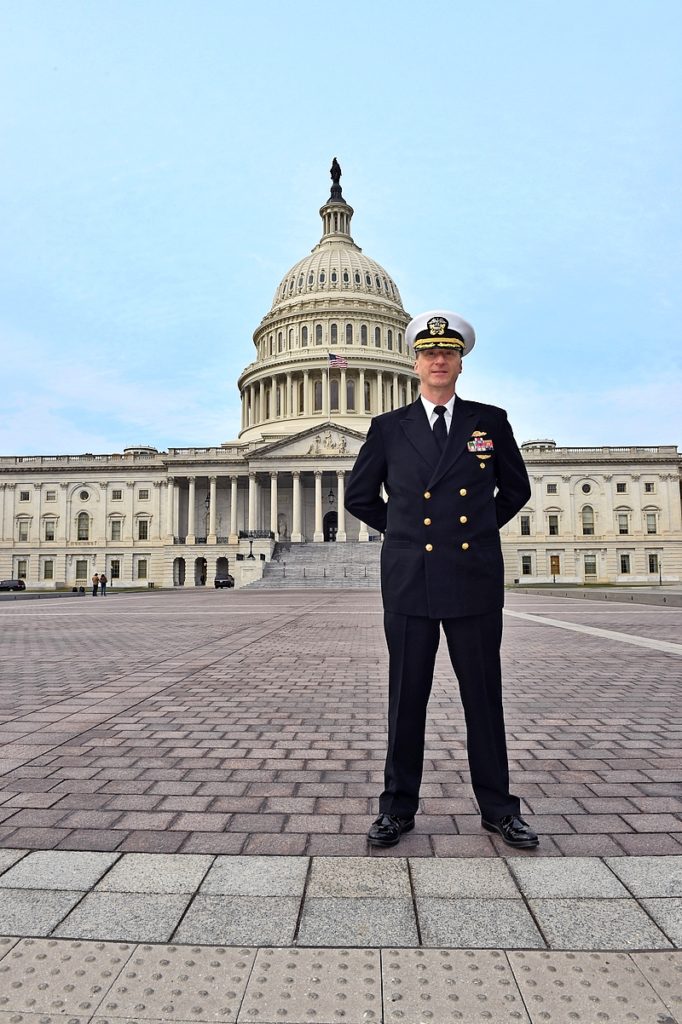Dream Job | Joseph W. Stubitz
By Karen Wojcik Berner
January 2017 View more Influencers
 Naperville resident US Navy Commander Joe Stubitz is, by his own admission, an “operations guy.” He served three tours in Kuwait, Iraq and Afghanistan/Bahrain, for which he received four military awards. This month he takes on the formidable task of operations officer of the Street Cordon, coordinating service members who will be participating in the 58th Presidential Inauguration on January 20.
Naperville resident US Navy Commander Joe Stubitz is, by his own admission, an “operations guy.” He served three tours in Kuwait, Iraq and Afghanistan/Bahrain, for which he received four military awards. This month he takes on the formidable task of operations officer of the Street Cordon, coordinating service members who will be participating in the 58th Presidential Inauguration on January 20.
What is the Street Cordon?
The mission of the Street Cordon is to show appropriate honors to the national colors, the president, and the vice president by rendering hand salutes. The Street Cordon team plans, coordinates and establishes a visible and uniform military presence along the presidential motorcade’s route to the Capital, where the president-elect will take the oath of office, and then from the Capital to the White House. Over fifteen hundred selected Army, Navy, Air Force, Marine and Coast Guard service members will line this route and render salutes.
The service members participating represent an integrated total force—soldiers, marines, sailors, airmen and coast guardsmen—who serve their country at home and around the world. The Joint Task Force–National Capital Region Inauguration team represents all of the US armed forces, and we’re proud to work alongside the Department of Homeland Security and other US agencies.
The US military has participated in this American tradition since April 30, 1789, when members of the US Army, local militia units and Revolutionary War veterans escorted George Washington to his first inauguration ceremony at Federal Hall in New York City.
Where will you be on Inauguration Day?
My primary location will be in one of the command posts and walking the route as needed. I have to ensure the service members march to their marks, ceremoniously render salute, and march back to the warming centers.
Coordinating that many people seems like a huge undertaking. What is the most stressful part?
The fifteen hundred service members we are responsible for will be on the world stage representing more than two million military members. The challenge lies in making sure all of the details are accounted for and any risk is mitigated properly. For example, we must ensure everyone is credentialed to be on the route and that they are all dressed in proper uniforms. Everything must be meticulously planned, down to even little things like scarves and gloves. If one wears a scarf, they all have to wear a scarf. It all must look seamless to the public.
What did you do before enlisting in
the Navy?
My civilian experience was in the financial industry working in the investment divisions of various banks. I graduated from Keller Graduate School of Management with a master of business administration with a concentration in human resource management and a bachelor of science in finance from the University of Illinois at Chicago. I enlisted in the Navy in 1988 and was commissioned as an officer in 1999.
Tell me about your family. What do you do when you are not deployed?
My wife, Theresa, and I have been married for 23 years. We have three children. Carter goes to Neuqua Valley High School, and Emily and Grace are at
St. Raphael Catholic School. We have lived in Aero Estates, the Naperville aviation community, since 2002. I was originally interested in the Navy to become a pilot, but that didn’t happen due to imperfect eyesight. However, I have a love for flight, so I pursued general aviation training on my own.


